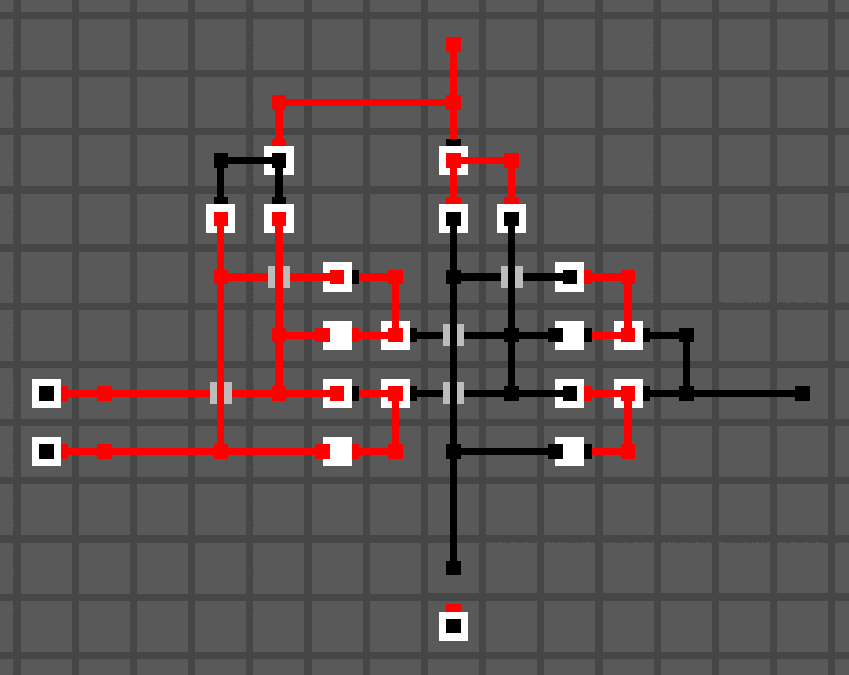A digital logic simulator built on simple rules.
In the world of FlipFlop, there are three fundamental logical components: wires, flips, and flops.
Wires connect components together and have a binary "powered" state. The state of a wire is determined by the states of the component outputs connected to it: if any of the outputs are powered, then the wire is powered; inversely, if all of the outputs are unpowered, then the wire is unpowered.
Flips are components with a single input and single output. The output is the opposite of its input; if the input is powered, then the output is unpowered, and vice versa. Flops are components similar to flips, except the output is the same as its input.
When the input to a flip or flop changes, its output doesn't update immediately. There is a small amount of delay, which is called the tick interval. Ticks, more precisely, are points in time where all component outputs get updated at the exact same time. When components update, they read the state of their inputs from immediately before the tick, so components' updates in the current tick can't affect each other.
Ticks happen repeatedly over time at a regular rate, called the tick rate. By default, the tick rate is 100 ticks per second (TPS). This rate is inversely related to the tick interval; for example, for a tick rate of 100 TPS, the tick interval is 1/100 seconds per tick, which we usually write as 10 milliseconds per tick (MSPT).
Inspired by:
-
TUNG and Logic World by Mouse Hat Games, for the art style and logic mechanics.
-
Minecraft by Mojang Studios, for the grid-based building mechanics.
-
NandGame by Olav Junker Kjær, for the idea of building up from something simple.
FlipFlop is distributed under the terms of both the MIT license and the Apache license version 2.0. See LICENSE-APACHE, LICENSE-MIT, and COPYRIGHT for details.
